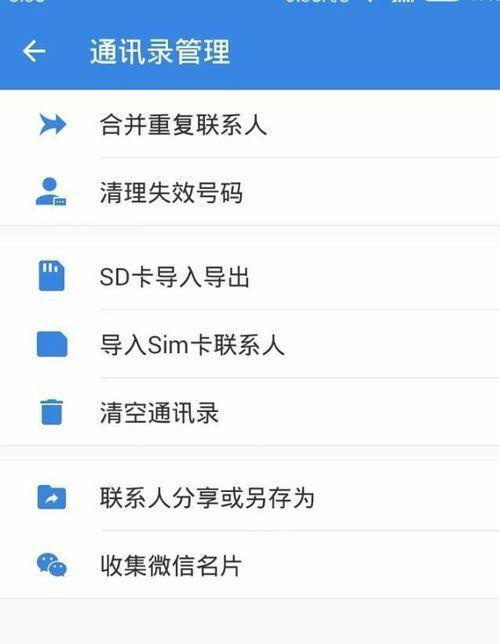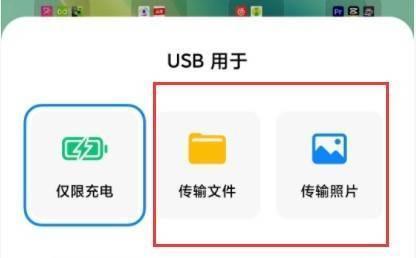 Mobile Tutorial
Mobile Tutorial
 Android Phone
Android Phone
 Tips for recovering deleted mobile text messages (use mobile phone backup and recovery tools to easily retrieve deleted text messages)
Tips for recovering deleted mobile text messages (use mobile phone backup and recovery tools to easily retrieve deleted text messages)
Tips for recovering deleted mobile text messages (use mobile phone backup and recovery tools to easily retrieve deleted text messages)
php editor Xiaoxin will share with you the techniques for recovering deleted mobile text messages. You can easily retrieve deleted text messages by using mobile phone backup and recovery tools. Whether text messages are deleted due to misoperation or other reasons, we can restore them through backup tools. These backup tools can back up mobile phone text messages to the computer. When we need to retrieve deleted text messages, we only need to use recovery tools to restore the backup files to the phone. This method is simple and easy, does not require professional knowledge, and allows us to easily retrieve important text message records.

1.Choose a suitable backup tool

2.Connect the phone to the computer
3 .Open the backup tool and select "SMS Backup"
4.Wait for the backup process to complete

5.Open the backup folder and find the deleted text messages
6. Import the backup file into the recovery tool
7. Open the recovery tool and select "SMS Recovery"
8. Select the backup file and click "Restore"
9. Wait for the recovery process to complete
10. Check the recovery results on your phone
11. Measures to prevent text messages from being lost again
12. Back up text messages regularly to prevent accidents Occurrence
13. Pay attention to avoid accidentally deleting text messages
14. Use cloud backup to improve text message security
15. Deleting and recovering mobile text messages is no longer a problem
1. Choose a suitable backup tool: third-party backup tools, iTunes, etc. There are many mobile phone backup tools on the market to choose from, such as iCloud. Choose the appropriate tool based on your phone model and operating system.
2. Connect the mobile phone to the computer: Make sure that the mobile phone and the computer have established a normal connection, and connect the mobile phone to the computer through a USB cable.
3. Open the backup tool and select "SMS Backup": and select in its interface to start the "SMS Backup" function of the selected backup tool.
4. Wait for the backup process to complete: The backup process may take a while, depending on the number and size of text messages in the phone's memory. Wait patiently for the backup to complete.
5. Open the backup folder and look for deleted text messages: and look for deleted text messages in it, find the text message backup folder created by the backup tool.
6. Import the backup file into the recovery tool: For subsequent SMS recovery operations, copy the backup file to the designated folder of the recovery tool.
7. Open the recovery tool and select "SMS Recovery": and select in its interface to start the "SMS Recovery" function of the selected SMS recovery tool.
8. Select the backup file and click "Restore": and click the "Restore" button to select the backup file from the folder of the recovery tool to start the SMS recovery process.
9. Wait for the recovery process to complete: The recovery process may take a while, depending on the number and size of text messages. Please wait patiently for the recovery to complete.
10. Check the recovery result in the mobile phone: Check whether the deleted text messages have been successfully restored to the mobile phone, open the mobile phone text message application, and after the recovery is completed.
11. Measures to prevent text messages from being lost again: Export text messages regularly to prevent text messages from being lost again. You can set up an automatic backup mechanism and turn off unnecessary automatic deletion functions.
12. Back up text messages regularly to prevent accidents: In order to easily retrieve deleted text messages in the event of accidental data loss, it is recommended to back up text messages regularly.
13. Pay attention to avoid accidentally deleting text messages: Pay attention to avoid accidentally deleting text messages, such as confirming whether important text messages are selected when deleting junk text messages, etc., when using your mobile phone in daily life.
14. Use cloud backup to improve the security of text messages: such as iCloud or Google Drive to improve the security and reliability of text messages. You can choose to back up text messages to the cloud.
15. Open the backup tool and select it, connect the mobile phone and the computer, and select the appropriate backup tool "SMS Backup" and pay attention to waiting and checking during the recovery process, etc., we can easily retrieve the data. Deleted mobile text messages. Improve the security and reliability of text message data. At the same time, regular backup and careful operation can also help us prevent text messages from being lost again. Recovering deleted mobile text messages is no longer a problem.
The above is the detailed content of Tips for recovering deleted mobile text messages (use mobile phone backup and recovery tools to easily retrieve deleted text messages). For more information, please follow other related articles on the PHP Chinese website!

Hot AI Tools

Undresser.AI Undress
AI-powered app for creating realistic nude photos

AI Clothes Remover
Online AI tool for removing clothes from photos.

Undress AI Tool
Undress images for free

Clothoff.io
AI clothes remover

Video Face Swap
Swap faces in any video effortlessly with our completely free AI face swap tool!

Hot Article

Hot Tools

Notepad++7.3.1
Easy-to-use and free code editor

SublimeText3 Chinese version
Chinese version, very easy to use

Zend Studio 13.0.1
Powerful PHP integrated development environment

Dreamweaver CS6
Visual web development tools

SublimeText3 Mac version
God-level code editing software (SublimeText3)

Hot Topics
 1664
1664
 14
14
 1423
1423
 52
52
 1321
1321
 25
25
 1269
1269
 29
29
 1249
1249
 24
24
 Summary of phpmyadmin vulnerabilities
Apr 10, 2025 pm 10:24 PM
Summary of phpmyadmin vulnerabilities
Apr 10, 2025 pm 10:24 PM
The key to PHPMyAdmin security defense strategy is: 1. Use the latest version of PHPMyAdmin and regularly update PHP and MySQL; 2. Strictly control access rights, use .htaccess or web server access control; 3. Enable strong password and two-factor authentication; 4. Back up the database regularly; 5. Carefully check the configuration files to avoid exposing sensitive information; 6. Use Web Application Firewall (WAF); 7. Carry out security audits. These measures can effectively reduce the security risks caused by PHPMyAdmin due to improper configuration, over-old version or environmental security risks, and ensure the security of the database.
 How to update the image of docker
Apr 15, 2025 pm 12:03 PM
How to update the image of docker
Apr 15, 2025 pm 12:03 PM
The steps to update a Docker image are as follows: Pull the latest image tag New image Delete the old image for a specific tag (optional) Restart the container (if needed)
 What are the common misunderstandings in CentOS HDFS configuration?
Apr 14, 2025 pm 07:12 PM
What are the common misunderstandings in CentOS HDFS configuration?
Apr 14, 2025 pm 07:12 PM
Common problems and solutions for Hadoop Distributed File System (HDFS) configuration under CentOS When building a HadoopHDFS cluster on CentOS, some common misconfigurations may lead to performance degradation, data loss and even the cluster cannot start. This article summarizes these common problems and their solutions to help you avoid these pitfalls and ensure the stability and efficient operation of your HDFS cluster. Rack-aware configuration error: Problem: Rack-aware information is not configured correctly, resulting in uneven distribution of data block replicas and increasing network load. Solution: Double check the rack-aware configuration in the hdfs-site.xml file and use hdfsdfsadmin-printTopo
 How to solve the oracle lock table
Apr 11, 2025 pm 07:45 PM
How to solve the oracle lock table
Apr 11, 2025 pm 07:45 PM
Oracle lock tables can be solved by viewing lock information and finding locked objects and sessions. Use the KILL command to terminate the idle locked session. Restart the database instance and release all locks. Use the ALTER SYSTEM KILL SESSION command to terminate a stubborn locked session. Use the DBMS_LOCK package for programmatic lock management. Optimize query to reduce lock frequency. Set lock compatibility level to reduce lock contention. Use concurrency control mechanisms to reduce locking requirements. Enable automatic deadlock detection, and the system will automatically roll back the deadlock session.
 How to clean all data with redis
Apr 10, 2025 pm 05:06 PM
How to clean all data with redis
Apr 10, 2025 pm 05:06 PM
How to clean all Redis data: Redis 2.8 and later: The FLUSHALL command deletes all key-value pairs. Redis 2.6 and earlier: Use the DEL command to delete keys one by one or use the Redis client to delete methods. Alternative: Restart the Redis service (use with caution), or use the Redis client (such as flushall() or flushdb()).
 What are the oracle11g database migration tools?
Apr 11, 2025 pm 03:36 PM
What are the oracle11g database migration tools?
Apr 11, 2025 pm 03:36 PM
How to choose Oracle 11g migration tool? Determine the migration target and determine the tool requirements. Mainstream tool classification: Oracle's own tools (expdp/impdp) third-party tools (GoldenGate, DataStage) cloud platform services (such as AWS, Azure) to select tools that are suitable for project size and complexity. FAQs and Debugging: Network Problems Permissions Data Consistency Issues Insufficient Space Optimization and Best Practices: Parallel Processing Data Compression Incremental Migration Test
 What is the impact of Redis persistence on memory?
Apr 10, 2025 pm 02:15 PM
What is the impact of Redis persistence on memory?
Apr 10, 2025 pm 02:15 PM
Redis persistence will take up extra memory, RDB temporarily increases memory usage when generating snapshots, and AOF continues to take up memory when appending logs. Influencing factors include data volume, persistence policy and Redis configuration. To mitigate the impact, you can reasonably configure RDB snapshot policies, optimize AOF configuration, upgrade hardware and monitor memory usage. Furthermore, it is crucial to find a balance between performance and data security.
 How to create oracle database How to create oracle database
Apr 11, 2025 pm 02:36 PM
How to create oracle database How to create oracle database
Apr 11, 2025 pm 02:36 PM
To create an Oracle database, the common method is to use the dbca graphical tool. The steps are as follows: 1. Use the dbca tool to set the dbName to specify the database name; 2. Set sysPassword and systemPassword to strong passwords; 3. Set characterSet and nationalCharacterSet to AL32UTF8; 4. Set memorySize and tablespaceSize to adjust according to actual needs; 5. Specify the logFile path. Advanced methods are created manually using SQL commands, but are more complex and prone to errors. Pay attention to password strength, character set selection, tablespace size and memory



